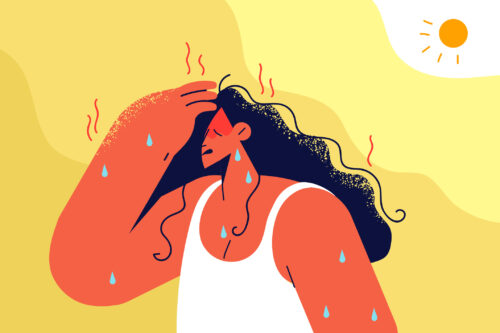
This article is from RISQ Consulting’s Zywave client portal, a resource available to all RISQ Consulting clients. Please contact your Benefits Consultant or Account Executive for more information or for help setting up your own login.

Heat-related illnesses can cause serious conditions or death as a person’s natural cooling mechanisms may not be able to keep up with the temperature. It’s essential for workers in the agriculture sector to be familiar with the signs and symptoms of heat illnesses and techniques to prevent them, especially during the hot summer months.
Types of Heat-related Illnesses
In addition to sunburns and heat rash, there are several types of heat-related illnesses, including:
- Heat cramps—These consist of muscle pain or spasms. Heavy sweating may also occur. Individuals suffering from heat cramps must stop physical activity, move to a cool place, and hydrate with water or a sports drink. Medical personnel should be contacted if the cramps last more than one hour or if the affected individual is on a low-sodium diet or has heart problems.
- Heat exhaustion—This can occur when an individual doesn’t intake enough fluids during hot weather. Signs of this illness include heavy sweating, dizziness, headache, fainting, weakness or tiredness, cramps and nausea or vomiting. An affected person may also exhibit cold, pale and clammy skin and a fast or weak pulse. If an individual displays the symptoms of heat exhaustion, they need to sip water, loosen their clothes and move to a cool place while cool, wet cloths are placed on their body. Medical personnel must be called immediately if the person is vomiting or if their symptoms worsen or last longer than one hour.
- Heat stroke—If heat exhaustion is not treated, it can lead to heat stroke, a medical emergency that can cause permanent disability or death. Symptoms of heat stroke include hot, dry, red or damp skin and a body temperature of 103 degrees Fahrenheit or higher, as well as headache, dizziness, confusion, nausea and dizziness. The affected individual may also have a fast, strong pulse and may be passing out. If these signs are present, 911 must be called immediately and the person needs to be moved to a cooler location. Cool cloths or a cool bath can also help lower their body temperature. Due to their altered state of consciousness during a heat stroke, it may not be safe for them to drink liquid.
Heat Illness Prevention Tips
There are several techniques to help prevent the above heat-related illnesses, including the following:
- Ease into work and follow the 20% rule. According to OSHA, nearly 3 out of 4 heat illness fatalities occur during the first week of work. Easing into work allows workers to build a tolerance to heat. The 20% rule allows for needed acclimatization by permitting no more than 20% of the first day’s shift to be at full intensity in the heat. The time at full intensity then may not be increased by more than 20% a day until the workers are used to the hot conditions.
- Hydrate. Workers need to hydrate before their shift and continue to drink water or electrolyte-rich beverages even when they are not thirsty. Alcoholic and caffeinated drinks should be avoided.
- Rest. It is vital for employees to take breaks from the heat in cool or shady locations.
- Dress appropriately. Wearing proper attire, such as light-colored, breathable and loose-fitting clothing, can help reduce heat-related risks.
Knowing proper first aid and when to call emergency personnel can also improve safety. For more information, contact us today.




